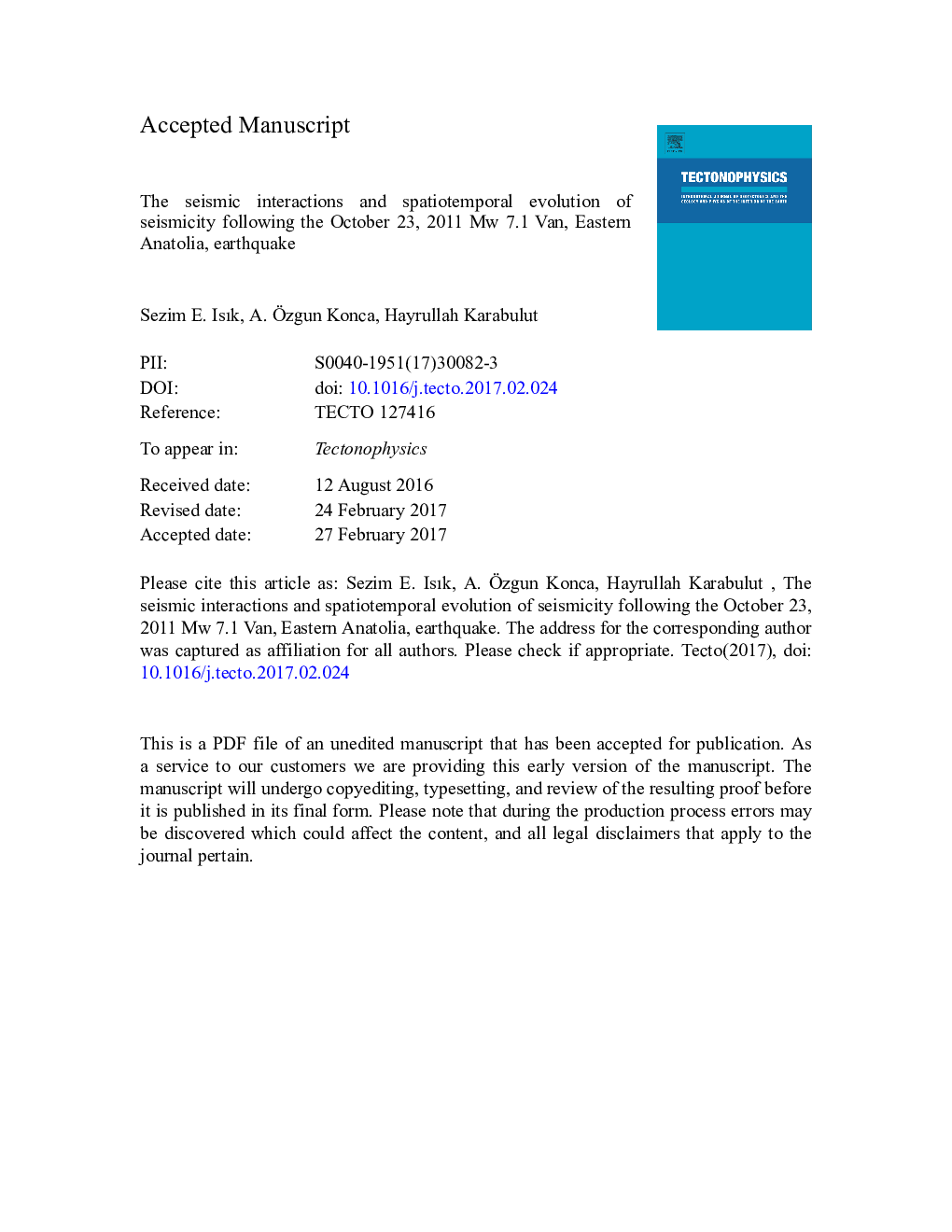| کد مقاله | کد نشریه | سال انتشار | مقاله انگلیسی | نسخه تمام متن |
|---|---|---|---|---|
| 5781653 | 1636701 | 2017 | 39 صفحه PDF | دانلود رایگان |
عنوان انگلیسی مقاله ISI
The seismic interactions and spatiotemporal evolution of seismicity following the October 23, 2011 Mw 7.1 Van, Eastern Anatolia, earthquake
دانلود مقاله + سفارش ترجمه
دانلود مقاله ISI انگلیسی
رایگان برای ایرانیان
کلمات کلیدی
موضوعات مرتبط
مهندسی و علوم پایه
علوم زمین و سیارات
فرآیندهای سطح زمین
پیش نمایش صفحه اول مقاله

چکیده انگلیسی
We studied the mechanisms and spatiotemporal distribution of aftershocks of the Mw 7.1 Van earthquake, in Eastern Turkey. The Van earthquake occurred on an E-W trending thrust fault, in a region under N-S compression due to the convergence of the Arabian plate toward Eurasia. We relocated the seismicity by combining catalogs from two agencies and studied the source mechanisms of the Mw 3.5-5.6 aftershocks using regional body and surface waves. In addition to the aftershocks with thrust mechanism on the mainshock fault, we identified three clusters with strike-slip activity. Two of the clusters are on the left-lateral faults perpendicular to the mainshock fault and are located at the lateral termination of the co-seismic rupture in each direction. Both western and eastern strike-slip clusters were triggered within the first few hours following the mainshock. They were initiated very close to the mainshock rupture plane and propagated away toward the south and north respectively. These two dominantly strike-slip zones are connected to the mainshock fault at a depth of 15Â km and possibly determined the lateral extent of the 2011 rupture. This system of two bounding left lateral faults with a thrust fault in between is overall consistent with the N-S convergent tectonic regime in the region. The complex geometry explains unexpected post-seismic motion at a GPS site and can be used to improve the post-seismic slip estimate of the earthquake. The third strike-slip cluster with 17Â days delay occurred on an E-W trending right-lateral fault and 40Â km on the south of the mainshock. The three activated faults have experienced Coulomb stress increase due to co-seismic rupture. In addition, most of the seismicity has occurred in regions that experienced Coulomb stress increase.
ناشر
Database: Elsevier - ScienceDirect (ساینس دایرکت)
Journal: Tectonophysics - Volume 702, 4 April 2017, Pages 8-18
Journal: Tectonophysics - Volume 702, 4 April 2017, Pages 8-18
نویسندگان
Sezim E. IÅık, A. Ãzgun Konca, Hayrullah Karabulut,